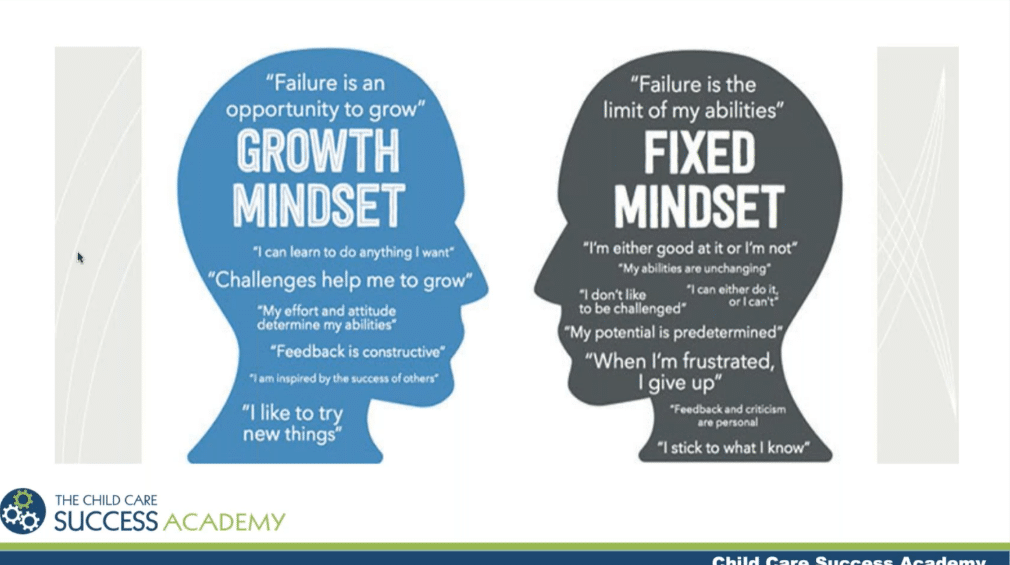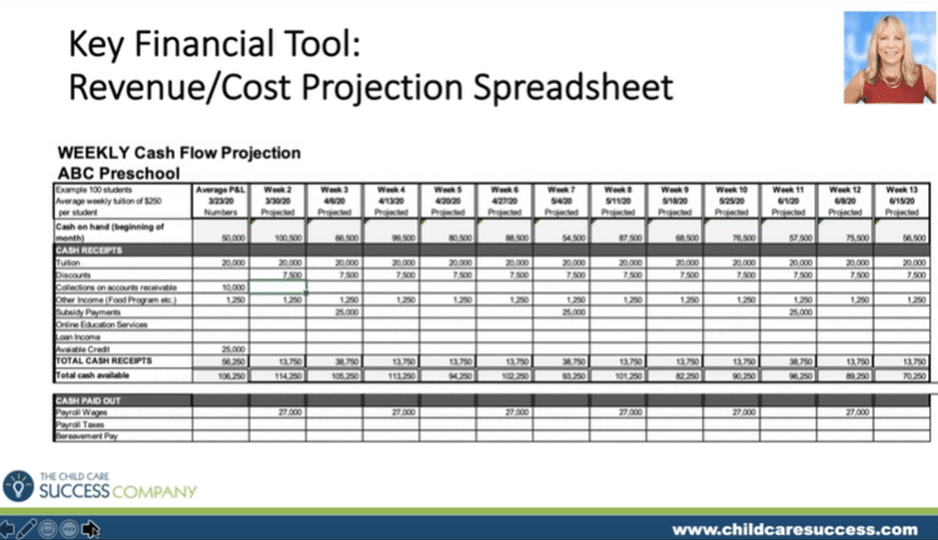
Leaders in child care centers daily are pulled in multiple directions. Managing everything that comes up, as well as trying to carve out time to actually do what it takes to keep the business running and growing, can lead to exhaustion and burnout.
In “The Overwhelm Loop: Running Your Business So It Doesn’t Run YOU” webinar sponsored by Procare Solutions, industry expert Kris Murray explained how to approach your business with a “systems mindset.”
“I am here to help you get out of firefighting mode,” said Kris, president of The Child Care Success Company.
She said it’s vital to set boundaries, then implement strategies to maximize your income such as tuition increases.
“All roads lead back to mindset,” Kris said. That includes setting aside time for yourself and letting others know what you need.
Let’s take a look at her four-step process to help you become a more productive leader in any early childhood education environment.
Step 1: Believe You Can Do This
You must have the belief that you can succeed before you can put knowledge into action, Kris said.
Negative people will slow down success and hinder growth in any organization.
“Practice letting things go more quickly that are negative,” she said.
She stressed that having the ambition, work ethic and attitude to achieve your goals is just as important as having the knowledge to achieve them.
Often, a breakthrough comes after a breakdown, Kris said,
“You have to work on your resilience factors,” she said.
And you have to believe you’re worth it. There’s a direct connection to what you believe you’re worth and what you’ll get in your business, she said.
“You have to show up as a positive leader to go forward,”she said, saying you must believe you are going to survive and do great.
And your income will never be larger than your self-image.
You need to have the right mindset when tackling overwhelm – a growth mindset.
Take a look at your negative self-talk and limiting beliefs, recognize them for what
they are and know that those thoughts are going to keep you in a fixed mindset.
Here’s a visual to show the difference between a fixed and growth mindset:

Feed your “growth mindset” every day as a practice and be intentional. Key into your negative self-talk and limiting beliefs.
Kris gave the following tips for creating a daily mindset practice:
- Watch a positive mindset video every morning
- Read some positive quotes
- Read a chapter from a personal growth/development book
- Find someone who needs their “bucket filled” and talk to him or her
- Pray
- Seek out positive friends and family and avoid those who are negative
- Cry when it feels overwhelming
Step 2: Actively Manage your Calendar

Actively managing your calendar is all about being disciplined and setting boundaries.
“You have to put systems in place,” Kris said.
Time-blocking is a strategy in which you block out time on your calendar to tackle projects and training, for example.
This could be a standing block of time, meaning it’s the same day and time every week, or it could vary depending on the week. The key is that you block the time in advance so it doesn’t get scheduled over with other things and that the time you block is during your “productivity zone,” when you typically are able to focus the most.
“How you approach your day is everything,” Kris said.
Share your schedule with your team, she said, and get staff coverage to help you handle answering the phone, working at the front desk and dealing with issues among parents and your team.
She also said to eliminate distractions and outsource or delegate small or large projects. An example she gave was to hire a part-time social media manager through the website upwork.com
Address “time vampires,” or those who tend to dominate your time with their needs or to chit-chat. Lovingly address it, perhaps in a staff meeting, letting team members know that during specific hours, you need to be left alone to tackle the needs of the business.
Set specific times each week in which you do tours and calls with parents, for example, and do them all in one chunk. That way, you’re not switching between different tasks that require different mindsets.
Step 3: Intensely Focus on Getting and Keeping Clients: Full Enrollment and Consistent Rate Increases
Focus is the key in this step. Kris said it’s essential to answer the following questions:
- Do you know your key stats like leads, tour conversion and retention?
- Do you have a proven enrollment-building process and system in place?
- Are your people trained on it?
- Do you know your “three uniques?” These are what differentiates you from other child care centers.
Step 4: Basic Financial Management = Hiring More Help
“So many of you guys have a head-in-the-sand mentality around money,” Kris said. You need to know everything about your financial situation.
Do market studies to see what other centers are charging, and don’t leave money on the table because you’re afraid to raise your prices for child care.
She said she’s seeing clients up their rates twice a year, in part due to inflation.
“Cash is the oxygen that runs your business,” Kris said.
Kris said that once you start drilling down into your financials, you can arm yourself with the data and the confidence you need to make smart business decisions. One recommendation is to create a quarterly Revenue/Cost Projection spreadsheet like the one below so you can better anticipate your financial needs:

And when it comes to the all-important job of hiring and retaining staff, she said that advertising on social media is a must. Think of what stops you as you scroll through Instagram and model it. Use fun words. Look into Canva, a website that allows you to make graphics you can post on social media sites.
“Be fun in your hiring,” Kris said.
Post pictures on Instagram and Facebook of what you’re doing in your school and with your team, such as a team celebration or something fun happening in the break room.
Lead with videos and photos of the fun you have in your center. Talk about the perks of working for you. Kris offers social-media help for child care centers through her site growyourcenter.com.
How Procare Can Help with Overwhelm

When you’re overwhelmed, it’s hard to know what to do.
“You have to use structures and systems like Procare Software and use them effectively,” Kris said.
Procare takes the complexity out of running a child care center with solutions that address every facet of your business, including automated payment processing, ratio tracking as well as billing and invoicing.
Track each family’s balance including their history of registration fees, tuition charges, family discounts and payments received. Calculate tuition charges, supply and activity fees plus co-payments and family discounts in seconds for easy billing.
You can also simply manage hourly billing, overtime and late pickup fees with ease.
Don’t forget to subscribe to Procare’s The Child Care Business Podcast and please join us for the following upcoming free webinars held each month as part of the Thrive in 2021 series:
- 9 Reasons Why Child Care Businesses Are Thriving with Systems for Operations and Management: On Oct. 20 at 1 p.m. ET, Andrea Dickerson, owner of IOwnADaycare.com, will share the foundational must-haves happy child care owners use for optimizing their organizational structure.
- Get Your Child Care Center Ready for Tax Season: On Nov. 17 at 1 p.m. ET, Audra Wilson Russell of WATS CPA will give you tips on how to get your child care center ready for tax season. She’ll explain what areas of your financial statements to review and correct, as well as how to review your profit and loss statement for reasonability and discover the nuances on your balance sheet that could prevent the filing of an accurate tax return.
Register here to attend the webinars!
And if you’re a center not yet using Procare to simplify your staff management, we are here to answer questions to help you manage your business more effectively.
Request a free demo today!


